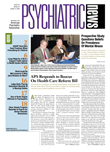In the largest genome-wide association hunt to date for genes that contribute to increased Alzheimer's risk, scientists have identified two gene variants that seem to heighten risk for the disease. Their study included DNA samples made available by dozens of labs in Europe and the United States.
One of the genes, called CLU (for clusterin), is located on chromosome 8. The other gene, called PICALM (for phosphatidylinositol-binding clathin assembly protein), is located on chromosome 11.
Four other gene variants have already been firmly linked with Alzheimer's. A variant of the gene making amyloid precursor protein and variants of the genes making presenilin 1 and 2 appear to be capable of causing the rare, early-onset form of Alzheimer's. The e4 variant of the APOE gene is a notable risk factor for the more common late-onset type.
The study was led by Julie Williams, Ph.D., and colleagues at Cardiff University in Wales. DNA samples were taken from 11,789 individuals—3,941 with Alzheimer's and 7,848 without. The well-established Alzheimer's risk gene variant APOE e4 was found to be present significantly more often in the samples from Alzheimer's subjects than from controls. But two other gene variants were as well—for the CLU gene and the PICALM gene.
Williams and her team then attempted to replicate their findings, this time using DNA samples from 4,363 individuals—2,023 with Alzheimer's and 2,340 without. Again they found that not just APOE e4, but also the CLU and PICALM gene variants were present significantly more often in DNA from Alzheimer's subjects than that from controls.
These findings, the researchers concluded, provide “compelling evidence” that both the CLU gene variant and the PICALM gene variant are risk factors for Alzheimer's. They published their findings online September 6 in Nature Genetics.
The PICALM gene is known to produce its protein product in all types of mammalian tissues, but especially at nerve synapses, and this protein product in turn is known to ferry neurotransmitters between neurons. So perhaps the PICALM gene variant that Williams and her colleagues have linked with Alzheimer's interferes with normal nerve synapse activities, thereby increasing the risk for Alzheimer's.
The CLU gene makes a major brain apolipoprotein, as does the APOE gene, called clusterin. The CLU gene makes more clusterin in areas of the brain that are injured or inflamed than in areas that are not. And clusterin has been shown to cooperate with the apolipoprotein made by the APOE gene in suppressing the deposit of amyloid plaques in the brain. So the CLU gene variant that Williams and her team have linked with Alzheimer's may malfunction in carrying out such activities and thereby increase Alzheimer's risk.
“Identifying gene variants like CLU and PICALM advances our understanding of the many genetic factors that may contribute to overall risk for this devastating neurological disorder and how these genes affect the development of Alzheimer's,” Marcelle Morrison-Bogorad, Ph.D., said in a press release issued in conjunction with the publication of the study's results. “This knowledge may then lead to novel disease pathways that can be targeted to develop new treatments.” Morrison-Bogorad is director of the National Institute on Aging's Division of Neuroscience. The National Institute on Aging's Laboratory of Neurogenetics is one of the labs that contributed DNA samples to the study.
An abstract of “Genome-wide Association Study Identifies Variants at CLU and PICALM Associated With Alzheimer's Disease” is posted at<www.nature.com/ng/journal/vaop/ncurrent/abs/ng.440.html>.▪
